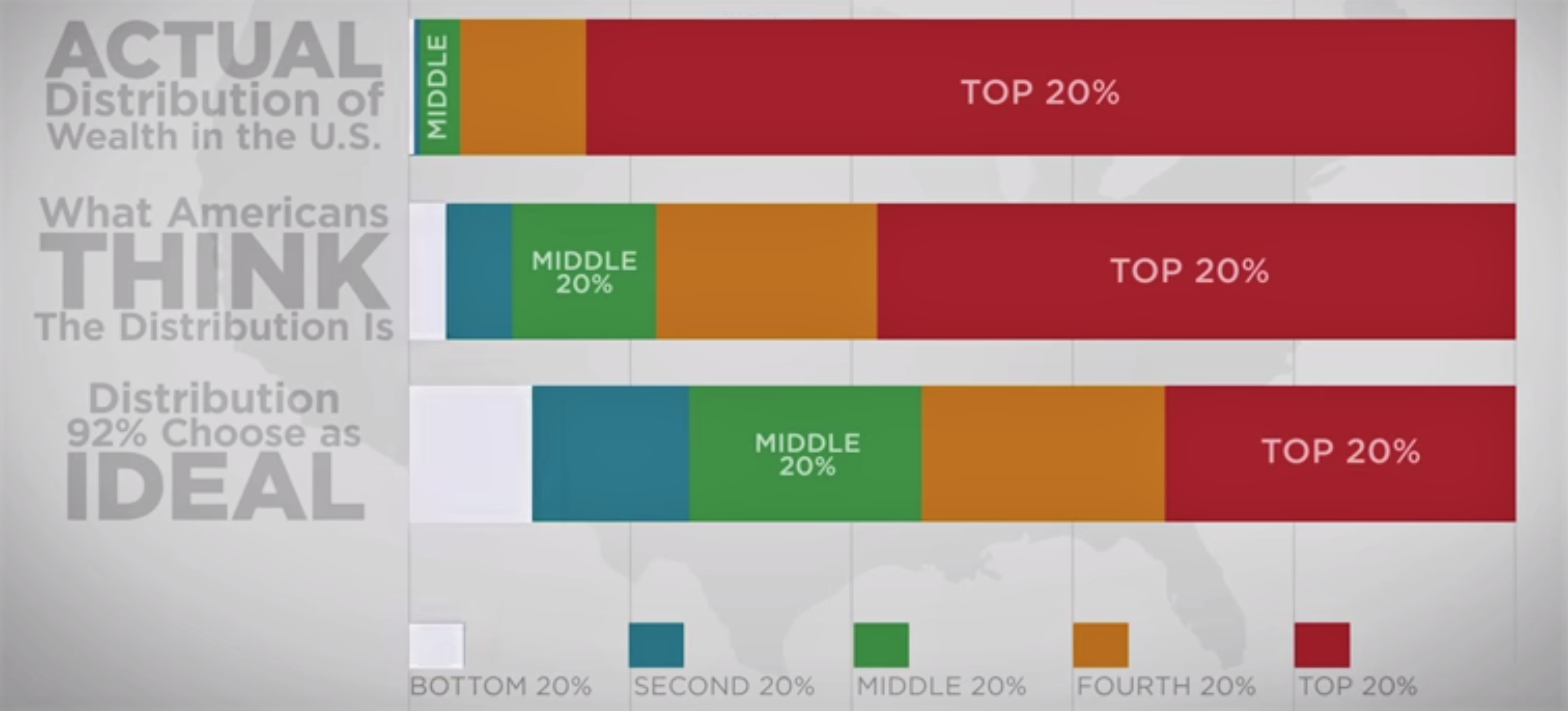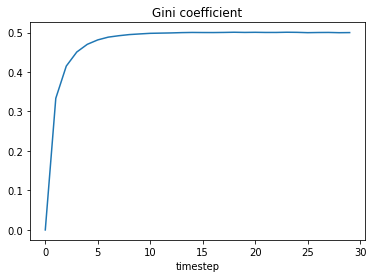Tick 1. Econophysics simulator¶
Economic inequality is one of the defining social issues of our age. Yet we have a poor grasp of the scale of inequality, as described in Scientific American and nicely shown in this video:
How does inequality arise? Is it an inevitable outcome of liberal economics, and if so how can it be mitigated by economic policy? These questions have been studied by economists and more recently by physicists. In this assignment you will investigate a simple "econophysics" model of inequality.
Here is a simple model. There are $N$ individuals in the population, each with an initial wealth of £1. Every timestep, we randomly group them into $N/2$ pairs. (Assume $N$ is even.) For every pair, we simulate an economic exchange, as follows. Let the two paired individuals have wealth $v$ and $w$, and update their wealth according to $$ v_{\text{new}} = R(v+w), \quad w_{\text{new}} = (1-R)(v+w) $$ where $R$ is a random number in $[0,1]$, chosen independently for every pair and at every timestep. This model is loosely inspired by the physics of gases, in which two gas molecules exchange a random amount of energy whenever they collide, and so it's called the Kinetic Exchange model.
We can measure inequality with the Gini coefficient, $$ G = 2\frac{\sum_{i=1}^N i\, w_{(i)}}{N \sum_i w_{(i)}} - \Big(1 + \frac{1}{N}\Bigr) $$ where $w_{(1)}$ is the smallest value, $w_{(2)}$ the second smallest etc. If everyone has the same wealth then $G=0$; if one person has all the wealth then $G=1-1/N$.

